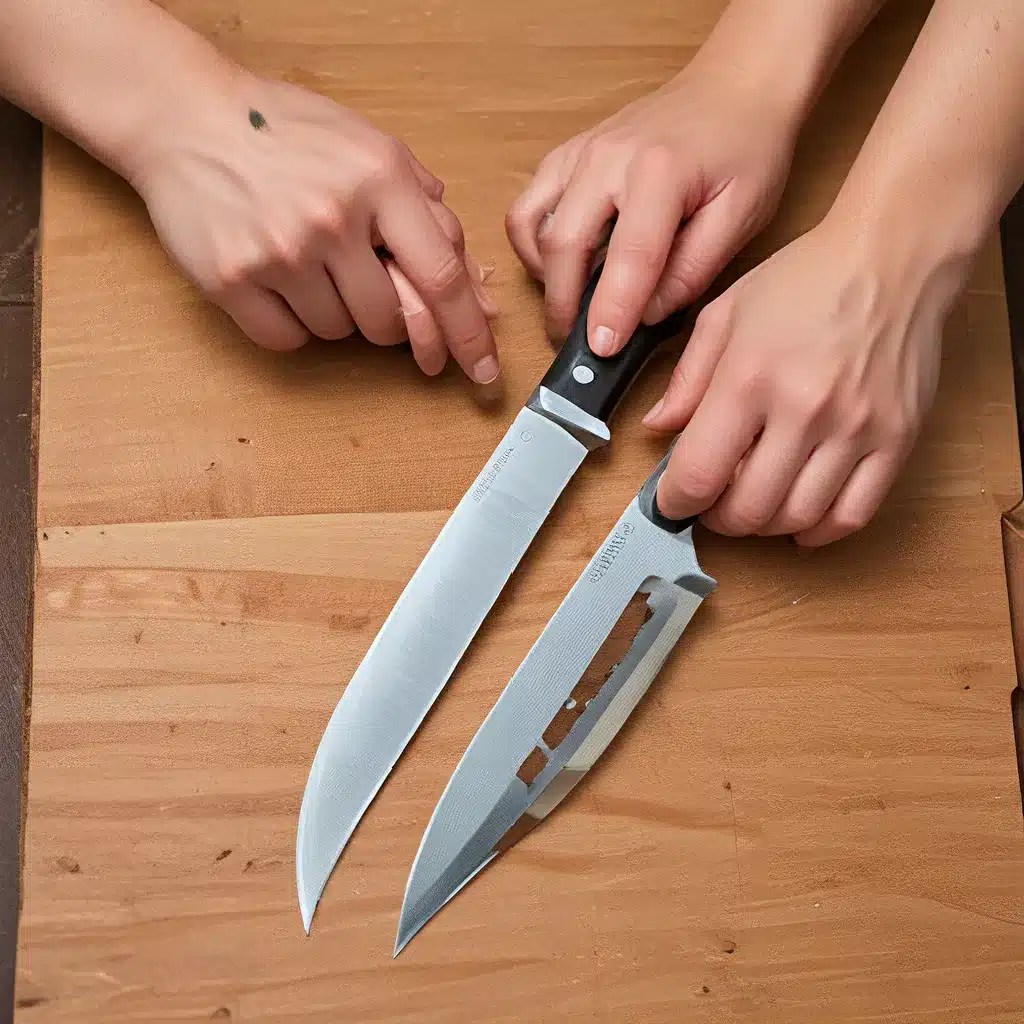
As someone who loves spending time in the kitchen, I know the importance of having solid knife skills. Let’s be honest – chopping, slicing, and dicing can sometimes feel like a tedious chore, especially when you’re trying to prepare a big, elaborate meal. But what if I told you that with a little practice, you can transform these basic tasks into a breeze?
In this comprehensive guide, I’m going to share the essential knife skills that will have you cutting like a professional chef in no time. Get ready to say goodbye to frustrating food prep and hello to effortless cutting. Whether you’re a seasoned home cook or just starting out, these techniques are going to change the way you approach meal preparation.
Mastering the Grip
The way you hold your knife can make all the difference in how efficiently and safely you cut. There are two main grips to know:
-
The Chef’s Grip**: This is the most intuitive and strongest grip. Simply wrap your hand around the knife handle like you’re shaking someone’s hand. This gives you maximum power and control.
-
The Pinch Grip**: Professional chefs often prefer this grip, as it provides more precision when chopping and mincing. Pinch the blade of the knife just above the bolster with your thumb and forefinger, then wrap the other fingers around the handle.
The best grip is the one that feels most comfortable for you. With a little practice, either technique will become second nature. Just remember to keep those fingers curled under to protect them from the blade.
Taming the Wiggly Veg
Anyone who’s ever tried to slice a round, slippery vegetable knows the struggle. Fruits and veggies that wobble, slide, and roll around on the cutting board can be real pain to handle, not to mention a safety hazard.
Here’s a simple trick to prevent this: Cut a thin slice off one side of the item so it has a flat surface to sit on the board. For larger items like winter squash or cabbage, you can even cut them in half or quarters to get those stable, flat sides.
And don’t forget the claw grip – shape your free hand into a claw, tuck your fingers back, and use all five to firmly hold the food in place. This helps keep your fingertips out of harm’s way while you slice away.
Essential Cutting Techniques
Now that we’ve got the basics down, let’s dive into the six fundamental cutting techniques that will have you prepping ingredients like a pro:
-
Slicing: Using a smooth, rocking motion from tip to heel, cleanly slice foods all the way through. Slide your claw hand back after each cut to guide the knife, not the food.
-
Dicing: First, cut the food into even slices. Stack a few slices, then cut them lengthwise into thick sticks. Finally, holding the sticks together, slice them crosswise into perfect cubes.
-
Mincing: Place the knife next to the item you want to mince, like herbs, ginger, or garlic. Hold the tip down and rock the knife heel up and down in a chopping motion until the food is finely chopped.
-
Wedging: Start by cutting the food in half lengthwise. Lay the halves cut-side down and slice through the center of each one to create wedges. For larger wedges, simply halve them again.
-
Chiffonade: This fancy-sounding technique is simply the art of cutting herbs or leafy greens into delicate ribbons. Wash and dry the leaves, then roll them up tightly and slice across the roll.
-
Diagonal Slicing: For longer items like bananas, carrots, or cucumbers, try cutting them on a diagonal. The sharper the angle, the wider your slices will be.
With these six techniques in your arsenal, you’ll be able to tackle just about any ingredient that comes your way.
Choosing the Right Knives
While you don’t need a massive knife collection to be a kitchen pro, there are a few essential blades that will make your life a whole lot easier:
-
Serrated Knife: Perfect for slicing through crusty breads and juicy produce like tomatoes without tearing. The Victorinox 8⅓-inch serrated bread knife is a great option.
-
Chef’s Knife: A high-quality chef’s knife like the Victorinox Fibrox 8-inch can handle everything from hacking through winter squash to mincing fresh herbs.
-
Paring Knife: For intricate tasks like peeling, deveining shrimp, or trimming vegetables, reach for a comfortable paring knife like the Henckels Premio 3-inch.
Remember, the knife you use most should feel like an extension of your hand. Take the time to find one that’s comfortable and well-balanced.
Putting it All Together
Now that you have a solid foundation in essential knife skills, it’s time to put them into practice. The more you use these techniques, the more natural and effortless they’ll become.
Start by tackling simple prep tasks like slicing vegetables for a salad or mincing herbs for a pasta dish. As you gain confidence, challenge yourself with more complex recipes that require precision cutting, like delicate fish fillets or intricate fruit garnishes.
The key is to be patient with yourself and not get discouraged. Knife skills take time to develop, but I promise the more you use them, the quicker and more confident you’ll become. Before you know it, you’ll be chopping, slicing, and dicing like a true culinary artist.
And don’t forget, the team at Saint Marc is always here to help you level up your cooking game. Whether you’re looking for top-notch kitchen tools or mouthwatering recipe inspiration, we’ve got you covered. Happy cutting!

